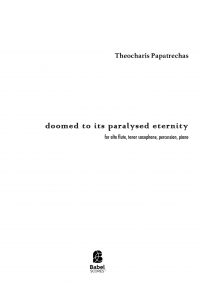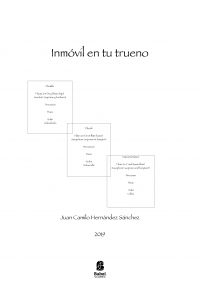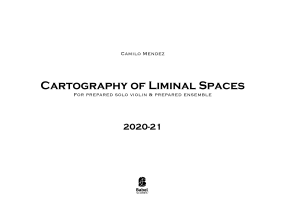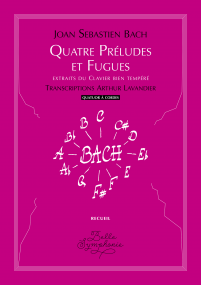Kinêm(a)bstract
ISMN : 979-0-2325-3232-5
- Identifiez-vous pour créer une liste
Kinêm(a)bstract
for amplified flute, saxophone, prepared piano and percussion
Clara Maïda
(12’35)
Premiere on May 4th, 2008. Opus 12.3 Evening, Le Rocher de Palmer, Bordeaux
Commissioned by the FRENCH MINISTRY OF CULTURE and PROXIMA CENTAURI ensemble
PROXIMA CENTAURI ensemble
Technical processing: Christophe HAVEL
Kinêm(a)bstract is the second part of Kinêm(a), a series of pieces for four to seven amplified instruments.
The title of the piece was derived from the Greek word "kinêma" (which means "movement") and from the term "abstraction".
In Kinê-Diffr(a)ct, the first piece of the series, the musical matter was criss-crossed by waves whose trajectory was continuously deviated or interrupted, as in the case of a diffraction.
In Kinêm(a)bstract, the musical gestures present ever more refined contours and get gradually reduced to minimal mobile appearances. The global sound envelope depends more on their movement than on their shape.
The piece attempts to trace the abstraction of movement or the movement of abstraction, i.e. the emergence of a pure movement whose dynamic force comes out from the configurations delineated by its execution.
The initial agitation -- with the circular formula of the saxophone or of the piano, for instance, or the descending quiverings of the flute - gradually gives way to kinds of diagonals (the two-sound spaced motifs) or horizontal cross-hatched dashes (the regular repetition of a pitch).
Each sound gestuality is more and more disembodied, emptied from its content, and small mechanical formulae appear here and there, introducing a rigidity, an ever more abstract dimension.
Whether the trajectories are circular, fluid, or geometrical, the kinetic dimension is the moving power of the piece and in its conclusion, the harmonic space gets wider with, on the one hand, the noise texture of the piano and the percussion, and on the other hand, the inexorable ascending movement towards the high-pitched register of the motifs of the flute and the saxophone, reduced to short glissandi.
Clara Maïda, May 2012
Pages - 108











